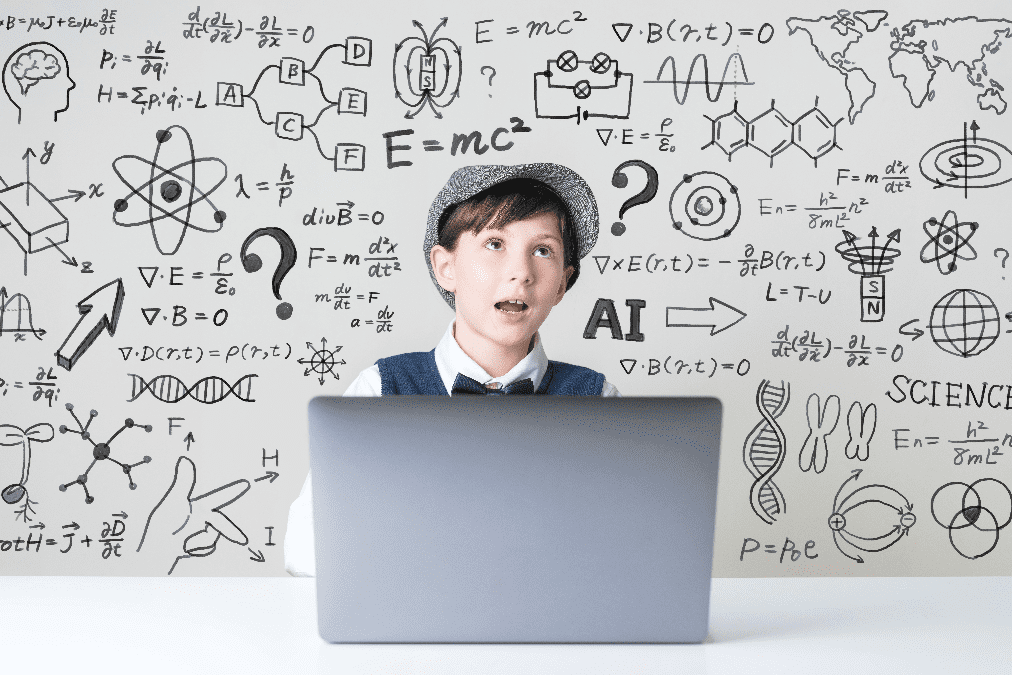
EdTech Integration: Revolutionizing Education in the Digital Age
In the rapidly evolving landscape of education, EdTech integration has emerged as a transformative force, reshaping the way students learn and educators teach. As technology continues to advance, its integration into educational settings has become more crucial than ever. This article delves into the intricacies of EdTech integration, exploring its benefits, challenges, strategies for success, and its impact on various stakeholders in the education ecosystem.
Benefits of EdTech Integration
Improved Engagement
EdTech tools captivate students’ attention, making learning more interactive and engaging. The incorporation of multimedia elements in lessons enhances comprehension and retention, creating a dynamic learning environment.
Personalized Learning Experiences
One-size-fits-all approaches are no longer effective in education. EdTech allows for personalized learning experiences tailored to individual student needs, accommodating different learning styles and paces.
Enhanced Collaboration
Collaborative learning is a cornerstone of EdTech integration. Tools like online forums, virtual group projects, and shared documents facilitate communication and teamwork, preparing students for the collaborative nature of the modern workforce.
Data-Driven Insights
EdTech platforms provide valuable data on student performance and engagement. Educators can analyze this data to identify trends, assess teaching strategies’ effectiveness, and make data-driven decisions to enhance learning outcomes.
Challenges in EdTech Integration
Resistance to Change
Implementing EdTech often faces resistance from educators and institutions accustomed to traditional teaching methods. Overcoming this resistance requires effective communication, training, and showcasing the benefits of technology in education.
Accessibility Issues
Not all students have equal access to technology at home, leading to potential disparities in learning experiences. Addressing accessibility concerns is crucial for ensuring that EdTech benefits all students, regardless of their socioeconomic background.
Integration Complexities
Integrating diverse EdTech tools into existing educational frameworks can be complex. Schools need robust infrastructure, ongoing support, and effective professional development to seamlessly incorporate technology into the curriculum.
Cost Concerns
Budget constraints pose a significant challenge to widespread EdTech adoption. Schools and institutions must weigh the upfront costs against the long-term benefits and explore cost-effective solutions for sustainable integration.
Successful EdTech Integration Strategies
Professional Development for Educators
Equipping educators with the necessary skills and knowledge is fundamental to successful EdTech integration. Professional development programs should focus on both technical proficiency and innovative teaching methodologies.
Infrastructure Readiness
Before implementing EdTech, schools must ensure their infrastructure can support these tools. This includes reliable internet connectivity, updated hardware, and cybersecurity measures to safeguard sensitive data.
Student Involvement and Feedback
Engaging students in the decision-making process fosters a sense of ownership and enthusiasm for EdTech. Gathering feedback on their experiences helps educators tailor technology integration to better meet students’ needs.
Continuous Evaluation and Adaptation
EdTech is not a one-time solution but an evolving process. Regular evaluations and adaptability are essential to refine strategies, update tools, and address emerging challenges.
Examples of EdTech Integration
Virtual Classrooms
Virtual classrooms enable remote learning, breaking down geographical barriers and providing access to education for students worldwide. Video conferencing, collaborative document editing, and real-time feedback characterize the virtual classroom experience.
Gamification in Education
Gamification incorporates game elements into the learning process, making education more enjoyable and motivating. It promotes healthy competition, rewards achievement, and enhances student participation.
Adaptive Learning Platforms
These platforms use artificial intelligence to tailor lessons to individual student progress. Adaptive learning systems adjust content difficulty based on students’ mastery, ensuring a customized learning journey.
Augmented Reality Applications
Augmented reality enhances the learning experience by overlaying digital information onto the physical world. It brings subjects like history, biology, and geography to life, providing a more immersive educational experience.
Future Trends in EdTech Integration
Artificial Intelligence in Education
AI is poised to revolutionize education by personalizing learning pathways, automating administrative tasks, and providing real-time feedback to both educators and students.
Virtual Reality Advancements
Advancements in virtual reality technology will create more immersive learning environments. Virtual field trips, historical recreations, and interactive simulations will redefine how students experience education.
Integration of Blockchain Technology
Blockchain can streamline administrative processes like credential verification, secure student records, and enable more transparent and efficient educational transactions.
Accessibility Improvements
Future EdTech trends will focus on making technology more accessible to all students, regardless of physical abilities or economic background. This inclusivity ensures that technology benefits every learner.
Impact of EdTech on Student Performance
Academic Achievements
Studies show a positive correlation between EdTech use and academic achievements. Personalized learning, immediate feedback, and interactive content contribute to improved student performance.
Skill Development
EdTech enhances not only academic skills but also critical thinking, problem-solving, and digital literacy. These skills are vital for success in the 21st-century job market.
Global Perspective
Virtual collaboration and online learning expose students to diverse perspectives and cultures, preparing them for a globalized world. EdTech fosters a sense of interconnectedness and global awareness.
EdTech and the Role of Teachers
Facilitating Learning
Teachers play a crucial role in guiding students through the vast landscape of EdTech. They become facilitators of learning, curating and adapting digital resources to meet the unique needs of their students.
Overcoming Challenges
Educators must embrace ongoing professional development to overcome the challenges of integrating technology into their teaching methodologies. This adaptability ensures that teachers remain effective in a rapidly evolving educational landscape.
Embracing Technology as a Teaching Aid
EdTech should be seen as a valuable tool, not a replacement for teachers. The human element in education is irreplaceable, and technology should complement, not overshadow, the teacher-student relationship.
EdTech and Parental Involvement
Communication Platforms
EdTech provides avenues for improved communication between parents, teachers, and students. Parental involvement in a child’s education becomes more accessible through digital platforms, ensuring a collaborative approach to learning.
Monitoring Student Progress
Parents can actively monitor their child’s progress through online platforms, tracking assignments, grades, and overall performance. This transparency strengthens the parent-teacher partnership in supporting student success.
Collaboration Opportunities
EdTech creates opportunities for parents to actively participate in their child’s education. Virtual parent-teacher conferences, collaborative projects, and online resources facilitate meaningful parental involvement.
Addressing Security Concerns in EdTech
Data Privacy Measures
Protecting student data is paramount. Robust data privacy measures, including encryption and secure storage, must be implemented to safeguard sensitive information from unauthorized access.
Cybersecurity Protocols
Schools must establish and regularly update cybersecurity protocols to protect against potential cyber threats. This includes training staff and students on best practices for online security.
Ethical Considerations
The ethical use of EdTech involves transparent data practices, informed consent, and responsible technology adoption. Addressing ethical considerations ensures a positive and trustworthy EdTech environment.
EdTech Integration in Different Education Levels
Elementary Schools
Incorporating EdTech at the elementary level focuses on building foundational skills through interactive games, educational apps, and multimedia resources. Emphasis is on fostering a positive attitude towards learning.
Middle Schools
EdTech in middle schools introduces more complex tools and platforms, preparing students for the demands of high school and beyond. Collaborative projects and interactive simulations enhance critical thinking skills.
High Schools
At the high school level, EdTech becomes an integral part of preparing students for higher education and the workforce. Virtual labs, online courses, and advanced simulations cater to diverse academic interests.
Higher Education Institutions
EdTech in higher education goes beyond traditional classrooms. Online courses, virtual internships, and research collaborations redefine the higher education experience, providing flexibility and accessibility.
Government Initiatives Supporting EdTech Integration
Funding Programs
Government funding programs support schools in acquiring the necessary technology for EdTech integration. Grants and subsidies aim to bridge the financial gap and promote widespread access to educational technology.
Policy Frameworks
Government policies outline guidelines for EdTech integration, ensuring a standardized and effective approach. Clear frameworks help institutions navigate the complexities of adopting technology in education.
Collaborations with Tech Companies
Government partnerships with tech companies facilitate the development and distribution of innovative EdTech solutions. Collaborations drive advancements, making cutting-edge technology accessible to a broader audience.
Evaluating the Effectiveness of EdTech Integration
Key Performance Indicators
Measuring success in EdTech integration involves tracking key performance indicators, such as student engagement, academic achievements, and teacher satisfaction. Regular assessments guide continuous improvement.
Feedback Mechanisms
Establishing feedback mechanisms, including surveys and focus groups, gathers insights from students, teachers, and parents. This ongoing dialogue ensures that EdTech strategies align with the evolving needs of the educational community.
Long-Term Impact Assessments
Assessing the long-term impact of EdTech on students’ academic and professional journeys provides valuable insights into its efficacy. Continuous evaluation informs future developments and improvements in educational technology.
Overcoming Common Misconceptions about EdTech
Technology Replacing Teachers
EdTech should be viewed as a supplement to, not a replacement for, traditional teaching methods. The human element is irreplaceable, and teachers remain the guiding force in students’ educational journeys.
One-Size-Fits-All Solutions
EdTech is diverse, catering to various learning styles and preferences. Customizable and adaptive platforms ensure that students receive personalized learning experiences, debunking the myth of one-size-fits-all solutions.
EdTech as a Distraction
When used appropriately, EdTech enhances focus and engagement. Proper implementation and monitoring can prevent EdTech from becoming a distraction, ensuring its positive impact on learning outcomes.
Conclusion
In conclusion, EdTech integration is revolutionizing education by providing innovative tools and methodologies to enhance the learning experience. While challenges exist, the benefits, from personalized learning to global collaboration, far outweigh them. As we navigate the evolving landscape of education, embracing and optimizing EdTech integration is key to preparing students for success in a rapidly changing world.
https://projectworking0.blogspot.com/2023/11/edutech-elegance-crafting-smart.html

